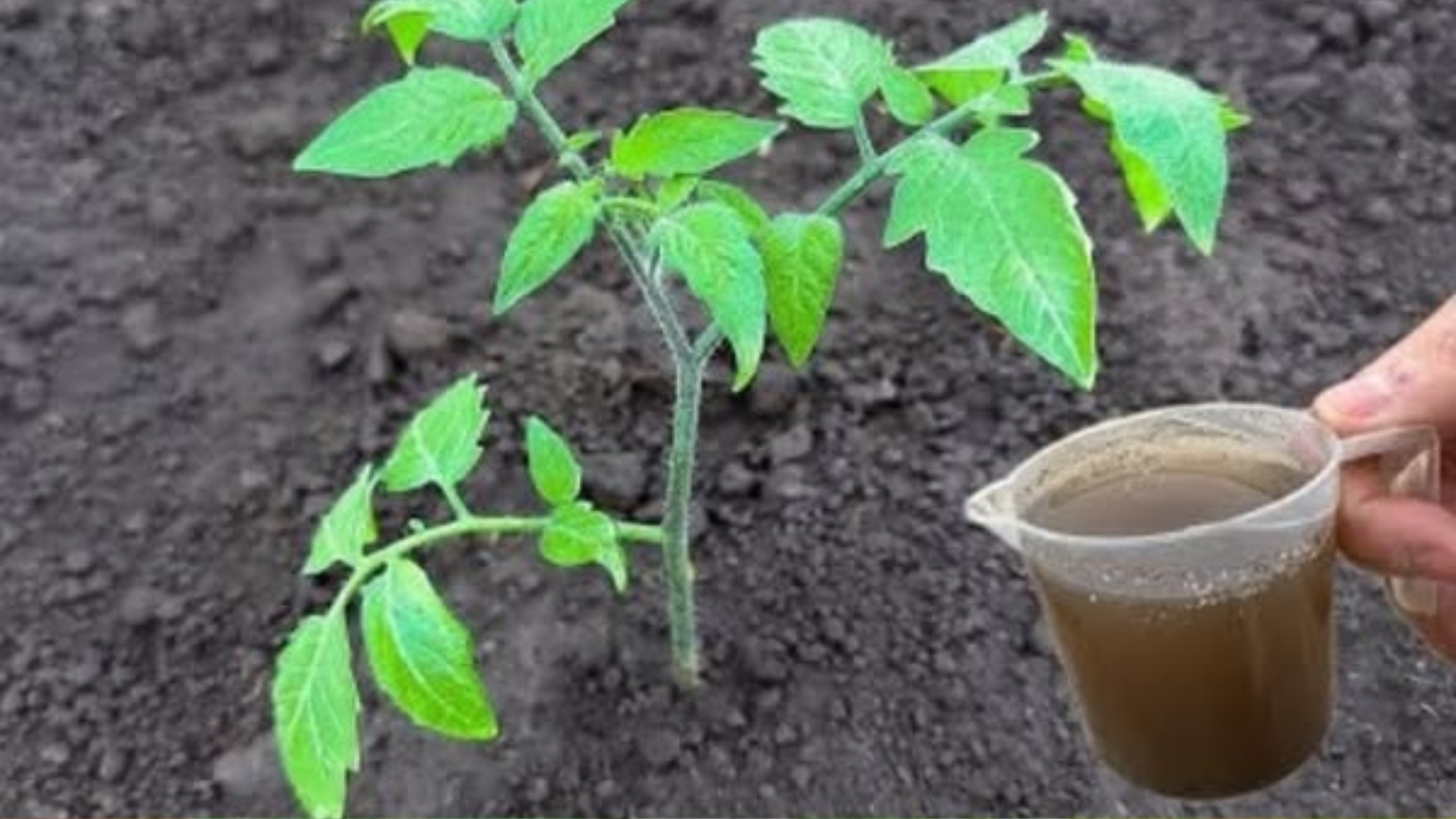The Ultimate Natural Fertilizer for a Thriving Garden
Looking for a simple, natural way to supercharge your garlic, tomatoes, and cucumbers? You’re in luck. This easy-to-make, yeast-based fertilizer is a powerful, budget-friendly solution that can help your garden flourish without relying on chemical products.
Whether you’re growing in pots, raised beds, or a backyard garden, this organic mix feeds your plants where it matters most—at the roots.
Let’s walk through how to prepare and use this all-natural fertilizer to get the biggest, healthiest harvest possible.
✨ Ingredients You’ll Need
This fertilizer is made with just three ingredients—most of which you likely already have in your kitchen:
- 1 tablespoon active dry yeast 🍞
- 1 tablespoon sugar 🍬
- 1 liter (about 4 cups) of warm water 💧
These simple items combine to create a natural fermentation process that encourages root development and boosts plant resilience.

Why Yeast?
Yeast isn’t just for baking—it contains essential nutrients like B vitamins, amino acids, and beneficial fungi that promote healthy microbial activity in the soil. These microbes help your plants absorb nutrients more efficiently and stimulate robust growth.
🛠️ How to Make the Fertilizer
Making this super fertilizer takes just a few minutes of prep, followed by a short wait for fermentation. Here’s how to do it:
- Start with warm water (not hot—around 100°F or 38°C is ideal). Pour it into a clean container.
- Add the sugar, stirring until it’s completely dissolved.
- Mix in the yeast and stir thoroughly.
- Let the mixture sit at room temperature for 24 to 48 hours. Stir it a few times during the process to help activate the fermentation.
After a day or two, the mixture should become foamy or bubbly—that means the yeast is alive and working. You’ve now got a batch of live, active plant food ready to be diluted and applied!
🌿 How to Use the Fertilizer
Once your mix is fermented, it’s time to apply it to your plants. But first, you need to dilute it.
Dilution Ratio:
Mix 1 part of the fermented solution with 10 parts water. For example, if you have 1 cup of the mix, add 10 cups of water. This ensures it’s gentle enough not to overwhelm your plants.
Application Tips:
- Water at the base of the plants, not on the leaves. This directs nutrients to the roots, where they’re most effective.
- Apply every two weeks during the active growing season (spring through early fall).
- Use in the early morning or late afternoon to avoid sun scorch and allow better absorption.
- Great for container gardens as well as traditional soil beds.
You can use this natural booster on garlic, tomatoes, cucumbers—and even other fruiting plants like peppers and eggplants.
🌱 Why It Works
This homemade fertilizer works by enhancing the microbial life in your soil. Healthy soil microbes break down organic matter into nutrients your plants can easily absorb. The yeast also provides beneficial enzymes and minerals that encourage stronger stems, fuller leaves, and increased flowering.
You may start to notice:
- Greener foliage
- Faster growth
- Larger fruits and vegetables
- Improved resistance to disease and pests
🧄🍅🥒 Why Garlic, Tomatoes & Cucumbers Love It
These three crops are heavy feeders—they require plenty of nutrients to grow well, especially during flowering and fruiting stages. This natural mix gives them a gentle yet consistent nutrient boost, helping them thrive without the risk of chemical burn.
- Garlic benefits from increased microbial activity, which supports root development.
- Tomatoes respond with stronger stems and more prolific flowering.
- Cucumbers produce more blossoms and fruit, thanks to balanced, organic feeding.
🌼 A Greener Garden, Naturally
Using natural fertilizers like this yeast mixture not only helps your plants grow better—it also supports healthier soil in the long term. It’s an eco-friendly, cost-effective alternative to synthetic fertilizers, and it’s completely safe for pets, pollinators, and kids.
Plus, there’s something deeply satisfying about feeding your garden with something you made yourself.
✅ Final Tips for Success
- Store leftovers in the fridge for up to a week to slow fermentation.
- Avoid overuse—stick to biweekly applications. More isn’t always better.
- Watch your plants—if leaves begin yellowing or wilting, ease off and adjust your watering schedule.
Ready to give your garden a natural boost?
Try this yeast fertilizer and watch your garlic, tomatoes, and cucumbers reach their full potential—organically, affordably, and with minimal effort.


888slotgame.meSảnh game xổ số, lô đề tại đây nổi tiếng với độ uy tín và trả thưởng sòng phẳng, xanh chín. Do vậy mọi người hoàn toàn có thể yên tâm tin tưởng tham gia cá cược thỏa mãn niềm đam mê của mình. Đồng thời tất cả các game đều được chúng tôi sử dụng thuật toán RNG ngẫu nhiên đảm bảo tính công bằng 100%.
888slotgame.meSảnh game xổ số, lô đề tại đây nổi tiếng với độ uy tín và trả thưởng sòng phẳng, xanh chín. Do vậy mọi người hoàn toàn có thể yên tâm tin tưởng tham gia cá cược thỏa mãn niềm đam mê của mình. Đồng thời tất cả các game đều được chúng tôi sử dụng thuật toán RNG ngẫu nhiên đảm bảo tính công bằng 100%.
888slotgame.meSảnh game xổ số, lô đề tại đây nổi tiếng với độ uy tín và trả thưởng sòng phẳng, xanh chín. Do vậy mọi người hoàn toàn có thể yên tâm tin tưởng tham gia cá cược thỏa mãn niềm đam mê của mình. Đồng thời tất cả các game đều được chúng tôi sử dụng thuật toán RNG ngẫu nhiên đảm bảo tính công bằng 100%.